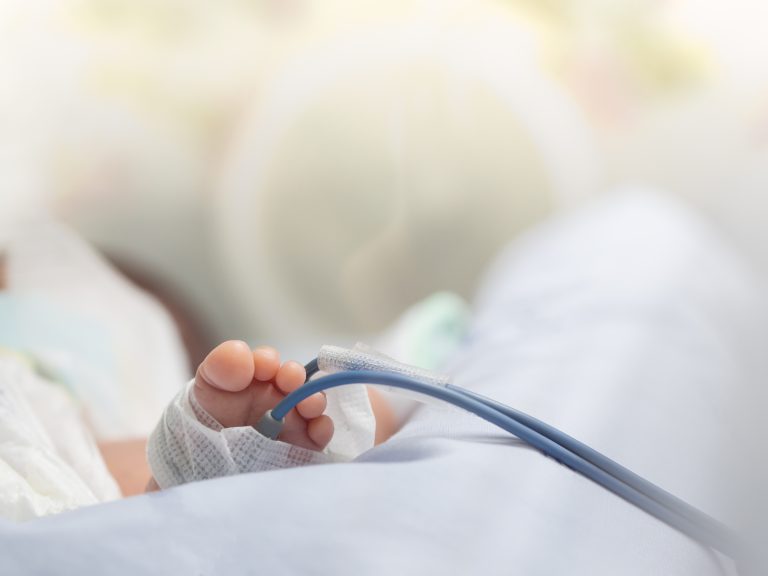Approximately 10% of babies are born prematurely. Preterm birth is any birth that occurs before the 37th week of pregnancy. If there is a condition that increases your risk, this likelihood increases even more.
Preterm birth accounts for 75% of newborn deaths. Premature babies tend to have slow growth and development. Problems can arise in hearing, vision, respiratory, and central nervous system development, leading to difficulties at school age.
Factors That May Increase the Risk of Preterm Birth
- Having experienced threatened preterm birth in this or a previous pregnancy
- Having previously given birth prematurely
- Multiple pregnancies (two or more fetuses)
- Previous procedures on the cervix
- The presence of a septum or fibroids in the womb
- Experiencing infection during pregnancy, especially kidney inflammation
- Undergoing abdominal surgery during pregnancy (appendicitis, gallbladder, ovarian surgeries)
- Smoking and drug use
- Bleeding in the first or second trimester of pregnancy
- Unmonitored pregnancy
- Getting pregnant while having an intrauterine device
- Fetal demise
- Incorrect calculation of gestational age
Signs of Threatened Preterm Birth
- Increase in vaginal bleeding or discharge
- Groin or abdominal pain
- Significant lower back pain
- Pain resembling menstrual cramps and continuing daily
- Feeling of tension in the uterus
- Feeling 5-6 or more contractions within an hour
- Sudden gushing of a large amount of fluid from the vagina
How is the Diagnosis of Threatened Preterm Birth Made?
The diagnosis of preterm birth is made by examining changes in the cervix. If your cervix has softened, turned forward, and started to shorten, it is determined that you are experiencing threatened preterm birth. Preterm birth is not diagnosed solely based on a feeling of contraction.
Fetal Fibronectin Test
Fetal fibronectin is a protein that can be detected in vaginal discharge between the 24th and 34th weeks of pregnancy. It indicates whether childbirth will occur within 2 weeks if there is a threat of preterm birth. It is obtained by taking a vaginal swab sample from areas near the cervix. If fetal fibronectin is detected, your doctor may prescribe bed rest and start treatment with necessary medications to prevent preterm birth. Medication treatment is also given to mature the baby’s lungs.
Treatment of Threatened Preterm Birth
The main goal of treatment is to restrict activity and increase fluid intake. In case of threatened preterm birth, you need to be hospitalised and stay in bed unless necessary. Initially, a serum is given intravenously. If necessary, tocolytic drugs, which are drugs that relieve uterine contractions, may be added to this serum.
Preterm Birth and Baby Health
The health of the baby is linked to how early the preterm birth occurs. Babies born after the 35th week usually go home with their mothers within a few days. The closer to the expected delivery date a baby is born prematurely, the longer they will stay in the hospital, approximately the same amount of time left until the expected delivery date. Premature babies cannot survive outside the incubator. These babies need neonatal intensive care.
Premature babies may experience difficulties in maintaining body temperature. They are kept under heaters to prevent hypothermia. Since they may have problems regulating blood sugar, calcium, and magnesium levels, these are supplemented intravenously. Umbilical cords are usually preferred for intravenous access. Since these babies may also have problems related to sucking, swallowing, and chewing, they can be fed through tubes inserted through the nose or mouth. If premature babies are fed too early, they may develop necrotising enterocolitis, a potentially fatal intestinal disease.
Since the liver function of premature babies is not fully developed, jaundice often occurs. This yellow appearance of the skin will disappear over time. Ultraviolet light therapy may be required to prevent the accumulation of bilirubin.
Potential Long-Term Problems in Premature Babies
Thanks to the significant advancement in neonatal intensive care units, many small babies can now be saved. The smaller a baby is born, the more problems they may face in the long term. These problems include chronic respiratory problems, hearing difficulties, vision problems, neurological and developmental problems, and learning difficulties. These are generally unavoidable problems. However, due to the excellent treatment methods implemented today, many premature babies recover without experiencing these difficulties. Throughout your pregnancy, staying in touch with your doctor and keeping your pregnancy under control will not only protect you from preterm birth but also from other potential risks.




